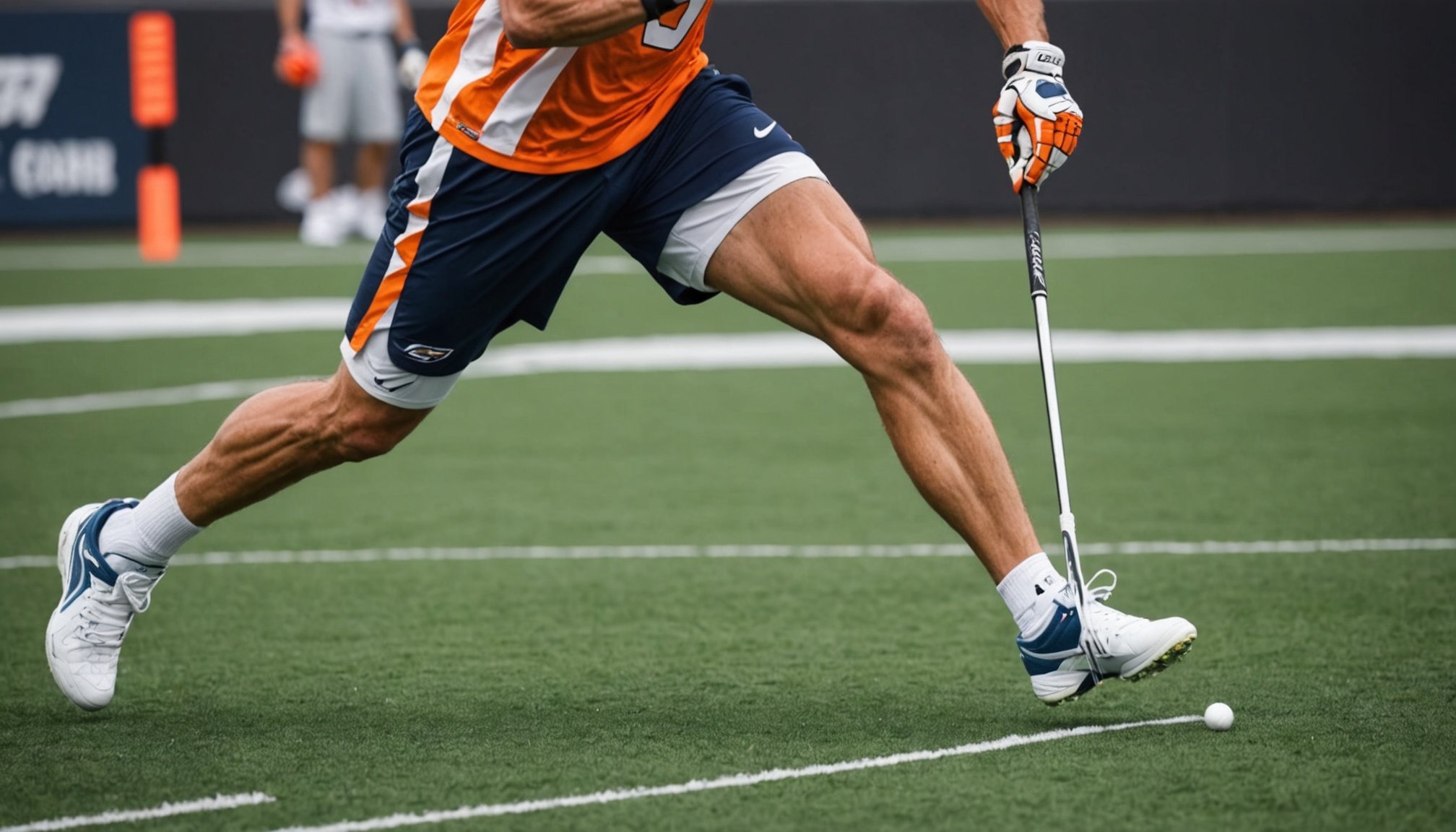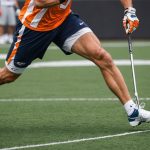Understanding Hamstring Injuries in Lacrosse
Hamstring injuries are prevalent concerns among professional lacrosse players due to the sport’s dynamic demands. These lacrosse injuries frequently result from sudden acceleration, deceleration, or abrupt changes in direction during gameplay. A precise understanding of these injury mechanisms can aid in both prevention and management strategies.
Common Hamstring Injuries
Professional lacrosse often sees players suffer from acute hamstring strains. These occur when the muscle fibres are overstretched or torn, typically during explosive movements. Participation in repeated high-intensity runs increases the risk, making hamstring health critical for sustaining peak athletic performance.
Also read : Enhance Goalkeeper Reaction Time in Water Polo: Targeted Drills for Maximum Performance
Specific Injury Mechanisms in Lacrosse
The mechanisms of hamstring injuries in lacrosse involve rapid sprints and frequent shifts in posture, making the muscle group vulnerable. Jumping, dodging, and quick direction shifts expose the hamstrings to intense stress, highlighting their susceptibility in this fast-paced sport.
Consequences of Neglect
Neglecting hamstring health can dramatically affect player performance. Untreated injuries may lead to longer recovery times, recurring strains, and decreased play ability. Ensuring proper warm-up routines, adequate rest, and strength training are vital to maintain robust hamstring function and prevent these debilitating lacrosse injuries.
This might interest you : Mastering Mid-Race Fatigue: Essential Mental Preparation Techniques for Triathletes
Stretching Techniques for Hamstring Injury Prevention
Effectively managing hamstring injuries is crucial for lacrosse players, given the high demands this sport places on the lower body. Dynamic stretching plays a pivotal role in preparing muscles before games and practices, enhancing performance, and diminishing the risk of injury. It involves fluid, movement-based stretches that increase heart rate and warm up muscles, which prepares them for more strenuous activities.
Incorporating a set routine of hamstring stretches can significantly enhance flexibility and muscle strength. Recommended stretches include leg swings, high knees, and walking lunges. These exercises target the hamstring muscles dynamically and help improve overall range of motion, reducing the likelihood of strains.
Clinical studies and anecdotal evidence alike have shown that regular flexibility exercises, including both static and dynamic merits, serve as effective injury prevention techniques. When lacrosse players consistently integrate these flexibility exercises into their training regimen, they not only boost their performance but also safeguard themselves against potential hamstring injuries. As a result, developing a strategic stretching programme is invaluable for long-term athletic health.
Strengthening Exercises for Hamstring Health
Proper hamstring strengthening is crucial for maintaining muscle balance and preventing injuries. Ensuring a balance between the quadriceps and hamstrings helps improve functionality and protects joints.
Key exercises target the hamstrings effectively:
- Deadlifts engage the entire posterior chain, offering a comprehensive approach.
- Leg curls specifically isolate the hamstrings, ensuring dedicated muscle activation.
- The Nordic hamstring curl is highly effective in enhancing strength and reducing injury risk.
Studies emphasise the importance of these strengthening routines in preventing injuries, particularly strains. By focusing on resistance training, individuals can significantly boost muscle stability and performance. Consistent practice of these exercises helps in achieving optimal muscle activation.
Additionally, balanced training aids in reducing the risk of overuse or strain on the quadriceps, a common concern that can lead to disproportionate force exertion. Facilitating equilibrium enhances overall athletic performance and supports long-term joint health. Prioritising both muscle groups supports comprehensive leg health, crucial for athletes and regular fitness enthusiasts alike.
Effective Warm-Up Routines
In lacrosse, dynamic warm-up routines are indispensable. Not only do they serve as core components of injury prevention protocols, but they also enhance pre-game preparation effectiveness. A comprehensive warm-up for lacrosse players typically starts with light cardio to boost heart rate, followed by dynamic stretches like leg swings and arm circles. This prepares the body, especially the hamstrings, for the explosive movements pivotal in the sport.
Hamstrings are particularly vulnerable during high-intensity activities, making their preparation through warm-ups crucial. Engaging them with targeted exercises like lunges and high knees ensures they are ready for sudden sprints, reducing injury risks. Expert opinions underscore the significance of including agility drills like cone exercises in warm-up routines, which fine-tune both mental and physical readiness.
Pre-game warm-ups are more than physical conditioning; they are mental primers. They offer an opportunity to focus, strategise and gear up for the challenges ahead. Professional coaches assert that a well-structured routine not only enhances performance on the field, but it also fosters team synergy and confidence. Thus, investing time in tailored warm-up strategies is paramount for any lacrosse player aiming to excel.
Recovery and Maintenance Strategies
Ensuring optimal hamstring health requires a dedicated focus on recovery techniques. Proper recovery helps prevent future injuries by allowing muscles to rebuild and strengthen. To achieve this, several strategies can be implemented.
Active recovery plays a crucial role in rehabilitating strained hamstrings. It involves low-impact activities that promote blood flow and help maintain flexibility without placing additional stress on the muscles. Engaging in activities such as walking, swimming, or cycling can accelerate the healing process.
Injury prevention is equally essential for long-term hamstring wellness. Incorporating regular stretching and strengthening exercises can enhance muscle resilience and minimise the likelihood of strains. Additionally, consistent warm-ups before physical activities prepare the muscles for exertion.
Therapeutic practices, such as massage and physiotherapy, offer further benefits. Massage therapy helps alleviate tension and improves circulation, which can expedite recovery. Physiotherapy provides tailored exercises and techniques to restore function and mobility, allowing for a more effective rehabilitation process.
Regularly integrating these approaches into one’s routine not only supports recovery from existing injuries but also assists in maintaining overall hamstring health. This comprehensive approach leads to improved performance and reduced risk of future complications.
Incorporating Expert Insights and Scientific Research
Delving into expert opinions regarding hamstring injury prevention reveals a broad consensus among sports professionals. These experts frequently recommend a combination of proper warm-ups, strength training, and flexibility exercises as key preventive measures. Integrating these strategies into regular training sessions can significantly reduce the risk of hamstring injuries, a frequent concern among lacrosse players.
In addition to practical recommendations, several scientific studies underscore the effectiveness of these techniques. For instance, research has shown that players who engage in tailored strength training regimens have notably fewer occurrences of hamstring strains. These findings illuminate the beneficial impact of structured training programs in sport-related injury prevention.
Insights from interviews with lacrosse trainers illustrate this further. David Thompson, a seasoned lacrosse coach, highlights the importance of conditioning: “Athletes who consistently follow strengthening and stretching protocols report fewer injuries.” Moreover, renowned sports scientist Dr. Emily Carter concurs, stating, “Increasing muscle endurance and flexibility not only enhances performance but also acts as a protective gear against injuries.”
Together, expert insights and scientific evidence provide a robust foundation, emphasizing the significance of incorporating these methods into routine training for enhanced performance and injury prevention.
Visual Aids and Demonstration Resources
Visual aids are pivotal in grasping new techniques, particularly for intricate topics like hamstring care. Instructional videos are invaluable as they provide step-by-step guidance, allowing viewers to observe correct posture and alignment. Video platforms like YouTube host numerous channels dedicated to fitness and wellness, offering comprehensive resources for hamstring exercises.
Moreover, diagrams can serve as an excellent supplement to videos. They offer a static representation of exercises, enabling individuals to pause and thoroughly study each movement. Diagrams often highlight muscle groups targeted by specific exercises, ensuring users can correlate their actions to the intended outcome, minimising the risk of injury.
For optimal training, consider using both instructional videos and diagrams. This combination caters to different learning styles, whether visual, auditory, or kinaesthetic. Training resources that blend these elements can lead to a clearer understanding and effective practice of necessary stretches and exercises, promoting better hamstring health. Furthermore, these resources typically offer variations of exercises, catering to varied skill levels and ensuring inclusivity.
Overall, leveraging visual aids in your training routine can bridge the knowledge gap and aid in mastering both simple and complex techniques.











